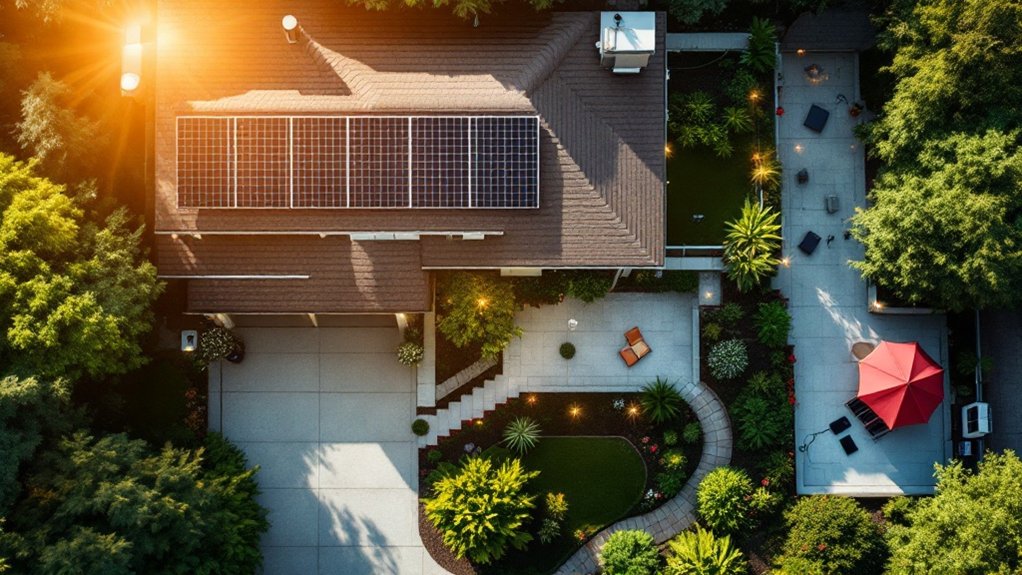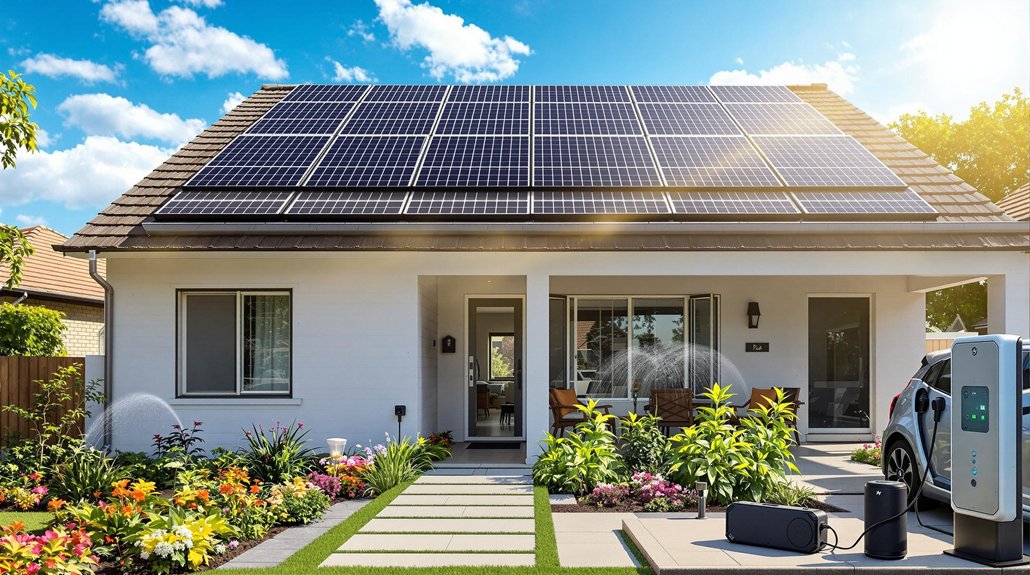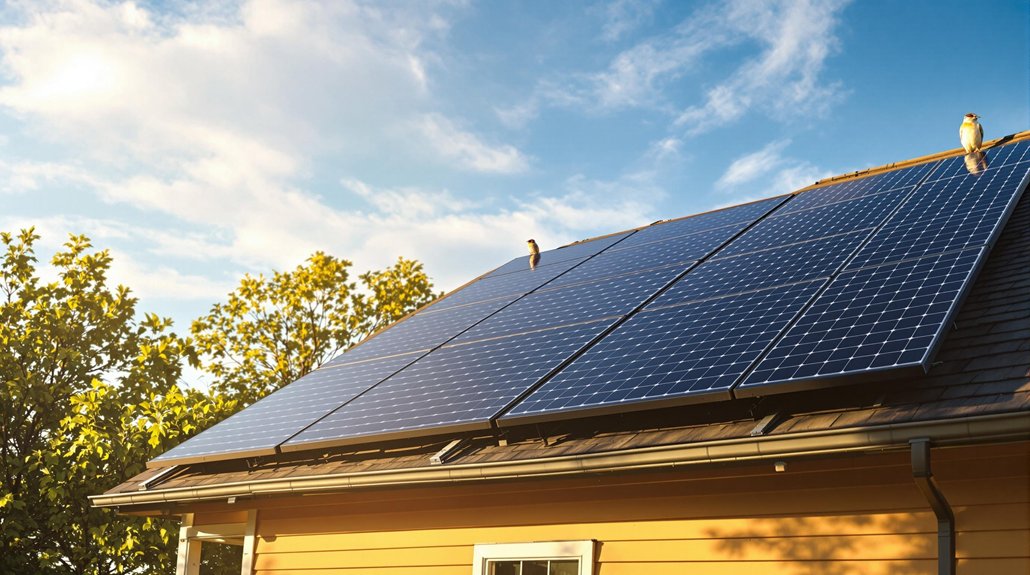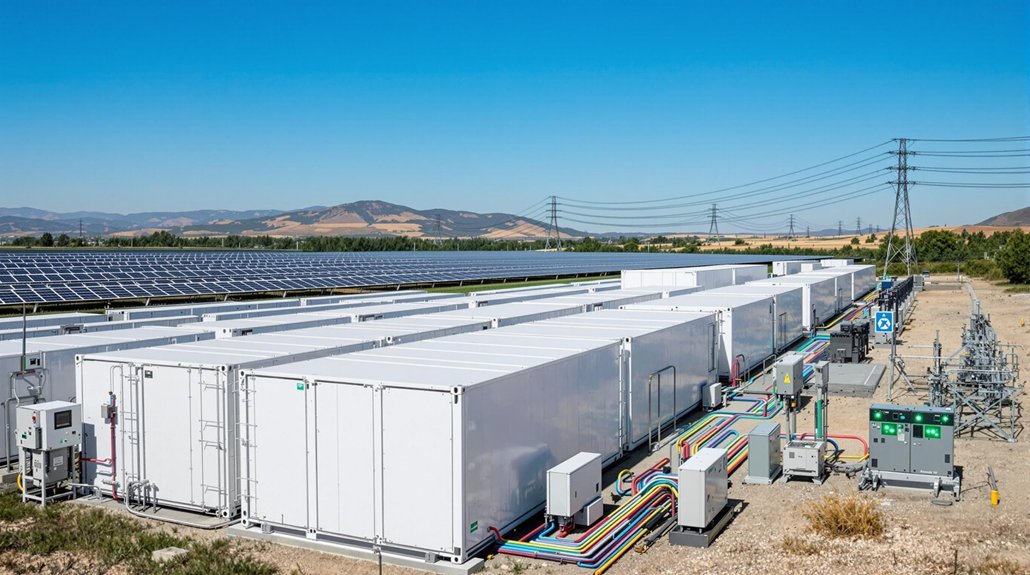Solar energy powers many practical devices in everyday life. Solar refrigerators, water heaters, and air conditioners reduce utility bills considerably. Portable chargers, speakers, and flashlights harness sunlight for on-the-go power. Transportation innovations include solar cars, boats, and buses that decrease fuel consumption. Outdoor lighting solutions like garden lights and street lamps operate independently from the grid. In agriculture, solar-powered irrigation systems and greenhouse fans improve efficiency. These applications demonstrate how sunshine transforms into usable energy for daily needs.

The sun’s abundant energy powers an impressive array of technologies that help people live more sustainably. Today’s solar innovations touch nearly every aspect of daily life, from home appliances to transportation.
Solar refrigerators use photovoltaic panels to run compressors, while solar water heaters cut electricity costs by 50-80%. Families can also install solar air conditioners that save up to 30% on cooling bills and solar-powered washing machines that use 70% less energy than standard models.
Today’s solar home appliances dramatically reduce utility costs while maintaining modern comfort and convenience.
Portable solar devices have become increasingly popular for people on the move. Solar phone chargers provide 2-3 full charges after just 4-5 hours in the sun. Music lovers enjoy solar-powered bluetooth speakers offering over 30 hours of playtime.
Hikers benefit from solar backpacks that charge devices during outdoor adventures, and solar flashlights deliver 8-12 hours of light on a single charge.
Transportation has embraced solar technology in remarkable ways. Solar cars can travel up to 750 kilometers on one charge. Solar-powered boats have crossed oceans using only renewable energy, while solar planes have circled the globe without fuel.
Even public transportation benefits, as solar buses reduce diesel consumption by up to 50%.
Outdoor lighting solutions include solar garden lights that operate for 8-10 hours after a day in the sun. Solar street lights cut energy costs by 30-50% and continue working during power outages. Solar security lights detect motion up to 40 feet away, providing safety without increasing electric bills. Solar-powered landscape lighting enhances outdoor spaces while requiring no electrical wiring, making installation simple and versatile.
In agriculture, farmers use solar greenhouse fans to improve ventilation and crop yields. Solar-powered irrigation systems reduce water usage by 40-80%, while solar fruit dryers preserve harvests without electricity. Smart garbage bins with solar-powered Wi-Fi capabilities help optimize waste management efficiency in agricultural settings.
Solar electric fences protect livestock without connecting to the power grid.
Even personal accessories harness solar power. Solar watches run for months without battery changes, and solar-powered fitness trackers extend battery life by 50%. These accessories contribute to reducing greenhouse gas emissions through their minimal energy consumption and renewable power source.
Solar hats charge phones while providing shade, and solar cooling vests reduce body temperature by 10-15°F, showing that solar energy has truly become part of everyday life.
Frequently Asked Questions
How Much Does a Home Solar Installation Typically Cost?
Home solar installations typically cost between $15,000 and $25,000 for a 5-10 kW system.
The national average sits at about $18,500 for a 6 kW system before any incentives are applied.
Homeowners can expect to pay $2.50 to $3.50 per watt installed.
Various factors affect final pricing, including location, roof condition, panel type, and local regulations.
How Long Do Solar Panels Last Before Needing Replacement?
Solar panels typically last 25-30 years before replacement becomes necessary.
Most manufacturers offer warranties covering this timeframe.
Though panels don’t completely fail at this point, they gradually lose efficiency at a rate of 0.5-0.8% annually.
After 25 years, panels still produce 80-90% of their original output.
High-quality panels can function for 40+ years, while factors like climate, maintenance, and installation quality affect longevity.
Can Solar Energy Work Efficiently in Cloudy or Cold Climates?
Solar energy can work efficiently in cloudy and cold climates. In overcast conditions, panels still generate 10-25% of their normal output.
Surprisingly, panels actually perform better in cold weather, as lower temperatures reduce electrical resistance. Countries like Germany lead in solar adoption despite frequent cloud cover.
Technological advances like anti-reflective coatings and bifacial panels have further improved performance in challenging weather conditions.
What Maintenance Do Solar Installations Require?
Solar installations require minimal upkeep. Rain often naturally cleans panels, though professionals recommend 1-2 cleanings yearly using soft brushes and non-abrasive soap.
Monthly visual inspections check for damage, loose parts, and shading issues. Homeowners should monitor system performance through apps and utility bills.
Annual professional maintenance includes thermal imaging, connection checks, and inverter servicing to guarantee peak efficiency and longevity.
Are There Tax Incentives Available for Residential Solar Energy Systems?
Yes, substantial tax incentives exist for residential solar energy systems.
The federal government offers a 30% tax credit through 2032, with no maximum limit. This benefit applies to equipment and installation costs for homeowners who purchase systems.
Additionally, 36 states provide property tax exemptions, while many offer sales tax breaks on equipment.
Some locations also provide cash rebates and performance-based incentives that generate ongoing income.









